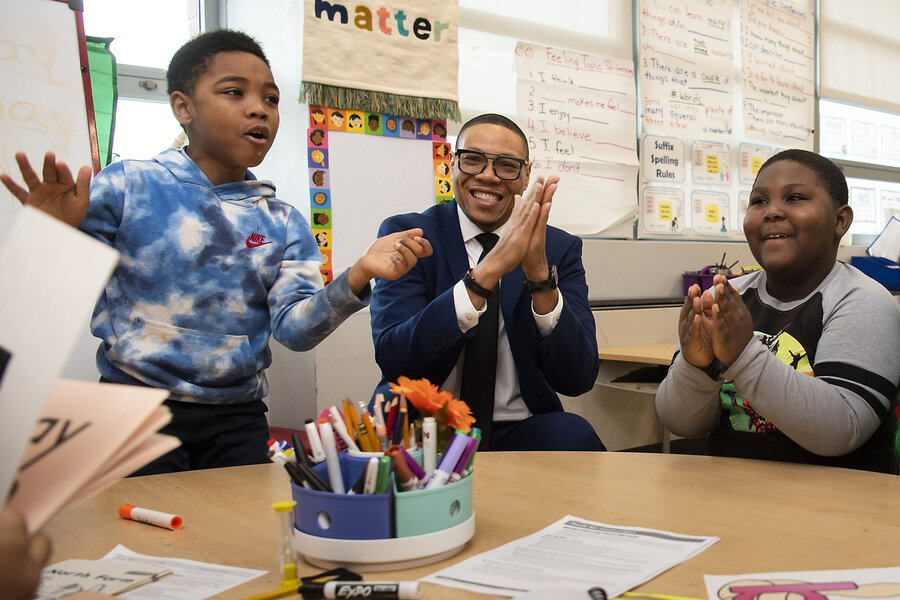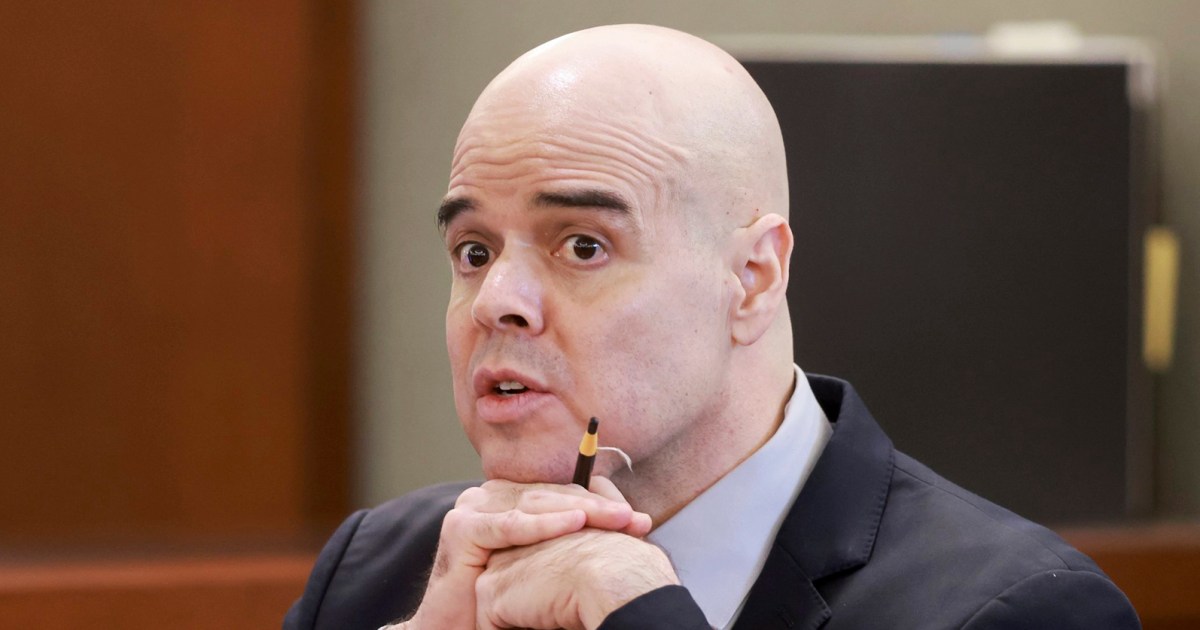[ad_1]
Education disruptions during the pandemic have sparked a scramble to help students in the United States. Many school districts quickly cracked down on the tutor — something usually only wealthy families could afford.
When Washington, DC, schools launched intensive tutoring programs, student outcomes improved. And more children started showing up every day too. Now, as for some educators, results like those that reinforce the case for the tutor as an integral part of the public school. A key challenge is finding funding.
Why we wrote this
A focused story
Educators knew the training could help with pandemic-related learning loss. With signs that is also reducing absenteeism, some in education wonder how the tool could have a more permanent place in the school day.
For Principal Akela Dogbe of Moten Elementary School, two things made the difference: the tutors provided a steady presence in the children’s lives, and they provided appropriate instruction. If data from the school’s i-Ready assessment software shows a student struggling with division, that’s what tutoring will address.
At Moten Elementary, 52% of students were proficient in English at the end of last school year, up from 13% in 2021-2022. In mathematics, the achievement level increased from 39% of students to 62%.
“This sense of belonging has absolutely made our students feel loved, challenged and prepared,” says the principal. “They had the adult they needed to connect with outside of just their teacher.”
When several schools in Washington, DC, launched intensive tutoring programs after the closure of COVID-19, the staff observed a pleasant surprise: more children began to appear every day.
Higher attendance rates — in addition to improved math and reading skills — proved a welcome side effect of an initiative aimed at bridging student learning gaps.
Disruptions to education during the pandemic have sparked a scramble to help students in the United States who were falling behind academically. Many school districts are quickly getting into tutoring — from online to in-person. It has put a strategy once considered a privilege for the wealthy few into the mainstream. Now, according to some educators and researchers, results like those of Washington strengthen the case for the tutor as an integral part of the public school.
Why we wrote this
A focused story
Educators knew the training could help with pandemic-related learning loss. With signs that is also reducing absenteeism, some in education wonder how the tool could have a more permanent place in the school day.
“This is more likely to happen if parents want this and believe they can achieve this – and deserve to achieve this – at school,” says Susanna Loeb, professor of education at Stanford University in California.
Amid the flurry of activity in recent years, researchers and policy advocates are increasingly pointing to a specific type of tutoring as the most effective. Known as “high impact” or “high dosage,” it generally refers to tutoring that happens at least three times a week for 30-minute sessions with groups of four or fewer students. What if it is during the regular school day? Even better.
“Done well, in-school education increases academic achievement and builds student-adult relationships that help lessen the sense of isolation that has plagued many students in the wake of the pandemic,” wrote Liz Cohen, director of policy for FutureEd. an educational think tank. at Georgetown University, in a report released earlier this year. “It has the potential to become a valuable and lasting component of how schools teach students.”
With pandemic relief funds expiring this year, however, districts are left to figure out how to keep such tutors afloat.
A November report from the National Student Support Accelerator, which Dr. Loeb directs, found that 40 states have provided funding for tutoring programs. Pandemic-era federal money played a role. U Arkansas Tutoring Corpsfor example, launched after state lawmakers passed legislation in 2023. Further west, New Mexico started a tutoring program initially aimed at helping students in early algebra courses.
“We need to be much more targeted, right, in who we serve and how,” says Lewis Ferebee, chancellor of the District of Columbia Public Schools.
How has high-impact teaching leveled the playing field?
In Washington, the high-impact tutoring initiative appears to have leveled the playing field. Tutura no longer exists only in the richest heart of the city. Now, students in a wider geographical area receive the academic boost for free at school. The initiative partnered with schools serving a greater number of at-risk students.
Dr. Ferebee cited Moten Elementary School as a case study for how high-impact tutoring can be achieved, given its “cooked” schedule that primarily uses building staff members. Shortening transition periods between classes is one way the school has carved enough dedicated tutor time into the school day.
As a result, every child in kindergarten through fifth grade receives more intensive tutoring, says the school’s principal, Akela Dogbe. The plan requires an all-hands-on-deck mentality, extending to the music teacher, the librarian, the dean and the principals, among others. The school also draws extra tutors from partnerships with nearby universities and non-profits.
With the logistics in place, two things happened that Ms. Dogbe credits for making the difference: The tutors provided a stable presence in the children’s lives, and they provided adequate instruction. If data from the school’s i-Ready assessment software shows a student struggling with division, for example, that’s what the supervisor would have to deal with.
“That sense of belonging absolutely made our students feel loved, challenged and prepared,” she says. “They had the adult they needed to connect with outside of just their teacher.”
More than half of D.C. schools, including Moten Elementary, participated in a high-impact tutoring initiative that began during the 2022-2023 academic year. (A small-scale version began in some District of Columbia public schools the year before.) The initiative involved a three-year investment of $33 million from the Washington State Office of the Superintendent of Education. . The school district also contributed $13 million over the past two years. The implementation was slightly different at each school, officials said, but the takeaway was the same.
In all D.C. schools that provide high-impact tutoring, including charters, students were nearly 7% less likely to be absent on days they had sessions, according to a report which oversaw the program’s inaugural year. In addition, tutored students narrowed the achievement gap with their peers.
At Moten Elementary, 52% of students were proficient in English at the end of last school year, up from 13% in 2021-2022. In mathematics, the results of the level has grown from 39% of students to 62% in the same time, according to the data from the evaluations i-Ready monitoring the progress of the school.
“I have some real mathematicians in my building,” says Ms. Dogbe. She adds that students asked for additional math problems and worksheets after her tutoring session.
The future of tutoring
The FutureEd report notes that spending swaps and the acquisition of new state and federal funding streams will be a key part of making supervision sustainable. But Stanford’s Dr. Loeb says she’s hopeful districts will make every effort to keep tutoring alive.
“Everybody’s thinking about where they’re going to get the funds,” he says, “but they’re really trying to get funds.”



